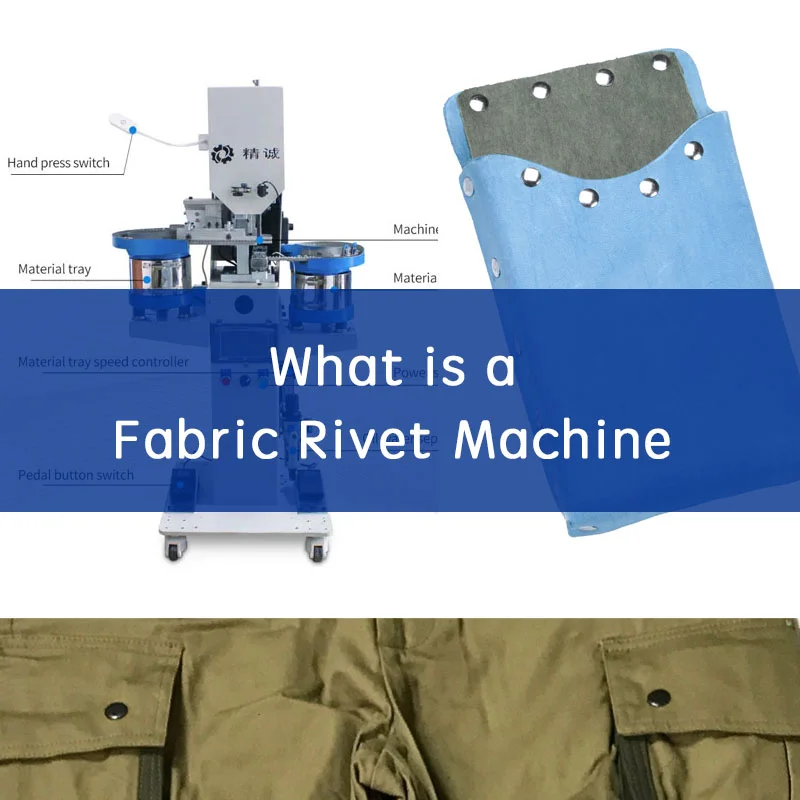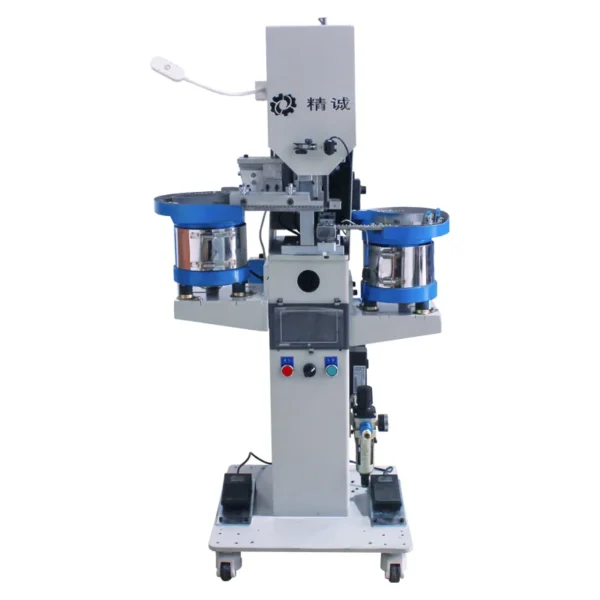In the textile and garment industry, the fabric rivet machine is an essential tool, so, what is a Fabric Rivet Machine revolutionizing the way we think about fastenings and durable garment construction? This machine, often overlooked in mainstream discussions about textile machinery, plays a crucial role in the production process, ensuring both efficiency and quality in creating long-lasting, robust clothing and accessories.
What is a Fabric Rivet Machine: Historical Context
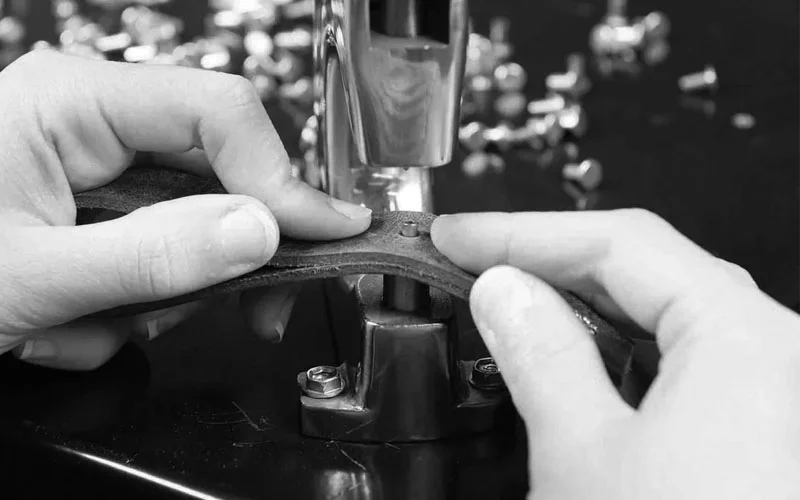
Early Use of Rivets in Textiles
Rivets have been used for centuries, originally in leatherwork and later in textiles, to enhance durability. The traditional method of hand-setting rivets was labor-intensive and required significant skill.
Evolution of Riveting Machines
The development of automated riveting machines marked a significant advancement. From hand-operated tools to sophisticated, programmable machines, the evolution has paralleled advancements in technology and manufacturing processes.
Key Milestones in Fabric Rivet Machine Development
- 19th Century: Introduction of hand-operated riveting tools.
- Mid-20th Century: Development of semi-automatic rivet machines.
- Late 20th Century: Emergence of fully automated, programmable machines.
Technical Specifications
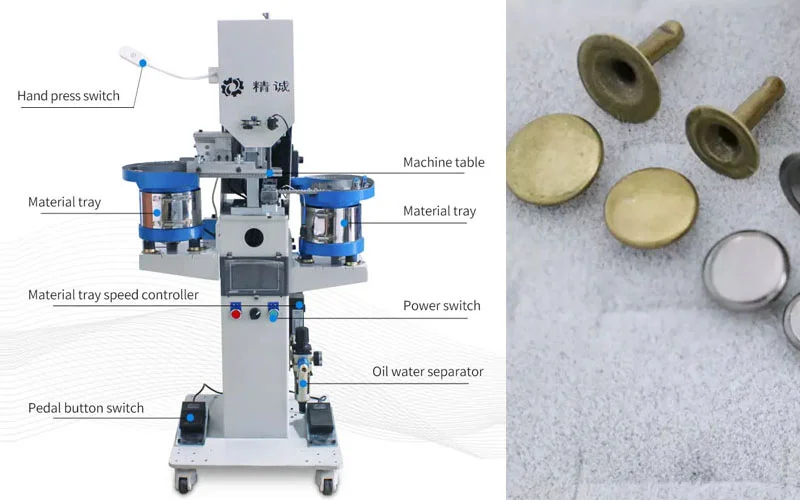
What is a Fabric Rivet Machine: Types of Fabric Rivet Machines
- Manual Rivet Machines: Suitable for small-scale production, requiring human operation for each rivet.
- Semi-Automatic Rivet Machines: Combine manual feeding with automatic setting, balancing efficiency and cost.
- Fully Automatic Rivet Machines: Designed for high-speed, high-volume production with minimal human intervention.
What is a Fabric Rivet Machine:Key Components
- Rivet Feeder: Ensures a continuous supply of rivets to the machine.
- Setting Die: Applies pressure to fix the rivet in place securely.
- Control Panel: Allows operators to set and adjust machine parameters.
Technical Features
- High Precision Setting: Ensures consistent quality across all applications.
- Adjustable Pressure: Allows for use with various fabric types and thicknesses.
- Speed Control: Adjustable to match production needs and prevent damage to materials.
Fabric Rivet Machine Applications
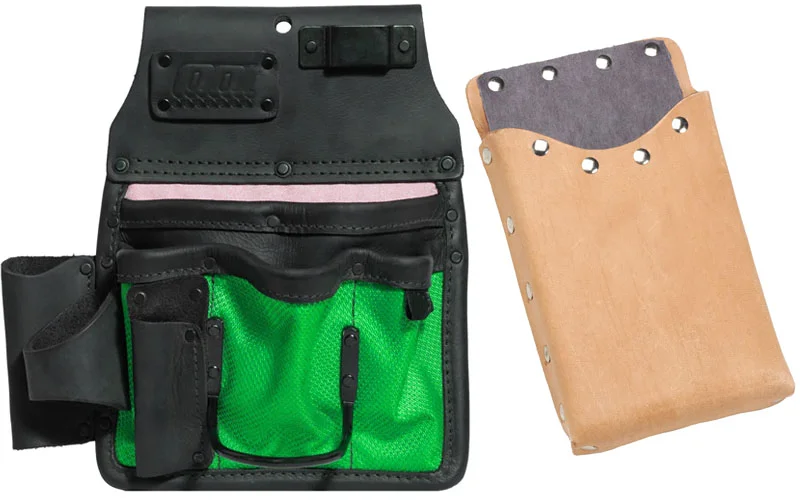
In Garment Manufacturing
- Jeans and Denim: Reinforcing pockets, seams, and stress points.
- Leather Goods: Securing straps and decorative elements on bags, belts, and wallets.
- Footwear: Attaching components in shoes and boots for added durability.
In Automotive Industry
Fabric rivet machines are used in car seat manufacturing to attach fabric securely to frames, ensuring durability and safety.
In Upholstery
Enhancing the durability of furniture coverings by securely attaching fabric to frames and other components.
Fabric Rivet Machine Benefits
What is a Fabric Rivet Machine? The best way to understand it is to understand it from the advantages.
Enhanced Durability
Rivets provide a strong, lasting fastening solution that significantly enhances the longevity of garments and accessories.
Increased Production Efficiency
Automated machines reduce production time and labor costs, allowing manufacturers to increase output without compromising quality.
Consistency in Quality
Precision settings ensure uniform application of rivets, minimizing defects and ensuring high standards of production.
Fabric Rivet Machine Future Prospects
What is a Fabric Rivet Machine: Advancements in Automation
Further developments in AI and machine learning will enhance the capabilities of fabric rivet machines.
Sustainability Focus
Increased focus on sustainable materials and processes will drive innovation in the industry.
Global Market Expansion
As manufacturing grows in emerging markets, the demand for efficient rivet machines will rise.
Comparative Analysis
Rivet Machines vs. Other Fastening Methods
- Rivets vs. Sewing: Rivets offer greater durability but are less flexible than stitching.
- Rivets vs. Adhesives: Rivets provide a mechanical bond that is more reliable under stress compared to adhesives.
Leading Brands
- Brand A: Known for high-speed, high-precision machines.
- Brand B: Specializes in cost-effective, durable machinery.
- Brand C: Pioneers in eco-friendly rivet technology.
How to Fabric Rivet Machine
What is a Fabric Rivet Machine? It is clear that if there is a Fabric Rivet Machine, how do we operate it?
Unpacking and Assembling the Machine
- Unpack the Machine: Carefully unpack the machine, ensuring all components and accessories are present.
- Read the Manual: Thoroughly read the manufacturer’s manual to understand the assembly process and safety precautions.
- Assemble the Base: Place the machine on a stable workbench or table and secure the base according to the manual.
- Attach the Components: Assemble the feeder, setting die, and any other parts as instructed.
- Connect to Power Supply: Ensure the machine is properly connected to a power source, adhering to the voltage requirements specified by the manufacturer.
Loading the Rivets
- Select Rivets: Choose the appropriate type and size of rivets for your project.
- Load the Feeder: Fill the rivet feeder with the selected rivets, ensuring they are oriented correctly for smooth feeding.
- Adjust the Feeder Settings: Set the feeder to the correct settings to match the size and type of rivets being used.
Adjusting the Machine Settings
- Set Pressure Levels: Adjust the pressure settings based on the fabric type and thickness. Refer to the manual for recommended settings.
- Set Speed Controls: Configure the machine speed according to the production requirements. For delicate fabrics, a slower speed may be necessary.
- Calibrate the Machine: Conduct a test run on a scrap piece of fabric to ensure the settings are correct and the rivets are applied accurately.
Maintenance Tips
- Regular Cleaning: Prevents buildup of debris that can affect performance.
- Lubrication: Keeps moving parts functioning smoothly.
- Software Updates: For machines with digital controls, ensure the software is up-to-date.
FAQS
What is a Fabric Rivet Machine?
A fabric rivet machine is a specialized device used to attach rivets to fabric materials. These machines can be manual, semi-automatic, or fully automatic, and they streamline the process of riveting, ensuring consistency and durability in garment production.
How Does a Fabric Rivet Machine Work?
A fabric rivet machine works by placing a rivet through fabric layers and securing it with pressure. The machine typically consists of a rivet feeder, setting die, and control panel. Rivets are fed into the machine, positioned over the fabric, and then pressed into place with precise pressure.
How Do You Maintain a Fabric Rivet Machine?
Regular Cleaning: Remove debris and fabric fibers to prevent malfunctions.
Lubrication: Keep moving parts well-oiled to reduce wear and tear.
Routine Inspections: Check for worn or damaged parts and replace them promptly.
Software Updates: For digital machines, ensure the software is up-to-date for optimal performance.
Conclusion
Fabric rivet machines are indispensable in modern textile manufacturing, offering unparalleled durability and efficiency. As technology advances, these machines will continue to evolve, integrating more sustainable practices and sophisticated automation features. For manufacturers, investing in a fabric rivet machine not only boosts production capabilities but also ensures a higher standard of product quality.

